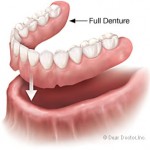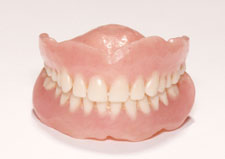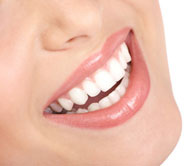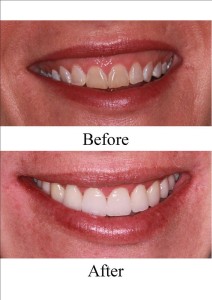 Getting dentures in the Bronx has never been so easy! Dentures are replacements for missing teeth that can be taken out, cleaned overnight, and put back in. While dentures take some getting used to, and will never feel the same as one’s natural teeth, modern day dentures are natural looking and more comfortable than ever before. If you are interested in finding out more about All-on-4 Implant Supported Dentures In The Bronx, you should call our Morris Park Dental Office for a consultation at (718) DR.SMILE (718-377-6453) or request a consultation.
Getting dentures in the Bronx has never been so easy! Dentures are replacements for missing teeth that can be taken out, cleaned overnight, and put back in. While dentures take some getting used to, and will never feel the same as one’s natural teeth, modern day dentures are natural looking and more comfortable than ever before. If you are interested in finding out more about All-on-4 Implant Supported Dentures In The Bronx, you should call our Morris Park Dental Office for a consultation at (718) DR.SMILE (718-377-6453) or request a consultation.
There are two main types of dentures you can get in the Bronx: full, and partial. Any Bronx dentist can help choose the type of denture that’s best, based on how many teeth need to be replaced, and the cost involved. But what are implant supported dentures, and how do they work?
Unlike regular dentures, which rests on the gums, implant supported dentures are anchored to the jawbone, by way of dental implants. Most often, this type of denture is placed in the lower jaw, mostly because dentures tend to be less stable in the lower jaw, as opposed to the upper jaw. However, implant supported dentures can be placed in in the upper jaw as well. With this type of denture, an implant supported denture snaps into place on the implants, which are surgically placed into the jawbone. This prevents the denture from slipping or coming loose during activities like eating, talking, or laughing. Denture paste and adhesives are no longer required because the dentures are secured by the fittings in the jaw. The implant supported denture can be removed at night for cleaning, just like regular dentures, or, if one has a fixed implant supported denture placed, these dentures can act as permanent teeth.
So what are the basics of implant supported dentures? There are two styles of implant supported dentures, bar-retained dentures and ball-retained dentures. Both types of dentures require two or more dental implants to be placed in the lower jaw, and both will provide a beautiful, natural smile.
In the Bar-Retained type of denture, three or more implants are surgically placed into the lower jaw. Attached to these implants is a metal bar that runs slightly above the gum line, inline with the natural position of teeth. The denture then rests on the metal bar and is attached using clips or other forms of attachments. This type of implant supported denture holds the denture in place without the steel studs used in Ball-Retained Dentures.
Many patients prefer this type of denture to a traditional denture because it provides greater denture integrity and doesn’t cause the painful rubbing of contemporary dentures. The denture is held in place more securely and is less likely to come loose.
Unlike Bar-Retained dentures, Ball-Retained Dentures, also called Stud-Attachment Dentures, use a ball-and-socked design to attach the dentures to the implants surgically placed in the gums. Traditionally, the denture is fitted with sockets into the jawbone, and the implants have a ball on top of them so the dentures can snap onto them. The denture and implants snap together where the ball and sockets meet.
 This form of denture is considered exceptionally secure. Ball-Retained Dentures are less likely to slip or move in the mouth, and will allow denture wearers to eat more foods they love and speak more clearly.
This form of denture is considered exceptionally secure. Ball-Retained Dentures are less likely to slip or move in the mouth, and will allow denture wearers to eat more foods they love and speak more clearly.
Dental implants are long-term replacements that your dentist surgically places into the jawbone. These dental implants, composed of titanium, fuse with the jawbone through a process called “osseointegration”. Implants never slip out or make embarrassing noises that expose the one’s denture, and because they are made of titanium you do not have to worry about decay. Also, given the fact that the titanium is surgically inserted into the jawbone, it will typically not develop into issue or cause bone loss.
Dental implants have been around for a long time, and their reliability has been proved well founded. Doctors have been implanting dentures this way for over 20 years and many of the implants that were placed in the late 80s and early 90s are still operating as if they were brand new, requiring little to no maintenance. If properly cared for, dental implants can easily last a lifetime.
Before any work is done, a dentist will preform an initial exam to evaluate the best type of implant supported dentures. The doctor will take x-rays, create impressions, and take one’s medical and dental history. If this information seems appealing, talk to a dentist and see if a temporary denture could be made to wear until the Implant-Supported denture is placed.
The initial surgery would place the implants in the jawbone. Three or six months will elapse before the next surgery. This is to ensure that the jawbone and implant integrate and fuse properly. The second surgery will expose the tops of the implant and a healing cap, or collar, will be placed on the head of each exposed implant. Less healing time is needed after the second surgery, so the next appointment will be within two weeks. In the third appointment, the healing caps will be replaced with regular abutments, the part of the implant the crown, metal bar, or ball-socket is attached to. The last appointment will be to try on the new dentures to ensure that it is a comfortable fit.
It is always important to remove dentures at night and to clean them thoroughly. One should also clean the attachments thoroughly to prevent gum disease, tarter buildup, or decay. Follow the dentist’s instructions carefully to keep that new smile as beautiful as possible.
Dentures are well known to be uncomfortable and inconvenient. Many patients complain of discomfort, embarrassment, and unhappiness with their smile. Dentures by themselves do not act as natural teeth would. The lower denture is not anchored in place and can slip and prevent the wearer from eating the foods they love. Worse yet, dentures can cause decay in the jawbone because they do not stimulate the bone like natural teeth do. Overtime, the gums one relies upon to keep their dentures in place dissolve and the worse the denture will fit.
Implant supported dentures provide the wearer with a life without pain, discomfort, and embarrassment. Implant supported dentures act like natural, healthy teeth; they stimulate the bone and prevent bone loss, increase bite forces up to 10x in the first year, and look and feel like natural teeth! Wearers often marvel at the ability to chew, speak, and smile with ease and comfort once had with natural teeth. Implants have truly revolutionized dentistry for the denture wearer.
Call our Morris Park Dentist office and request a dental appointment and consultation for All-on-4 implant supported dentures as soon as possible. Call (718) DR.SMILE (718-377-6453) today to find out more about Implant Supported Dentures In The Bronx.



